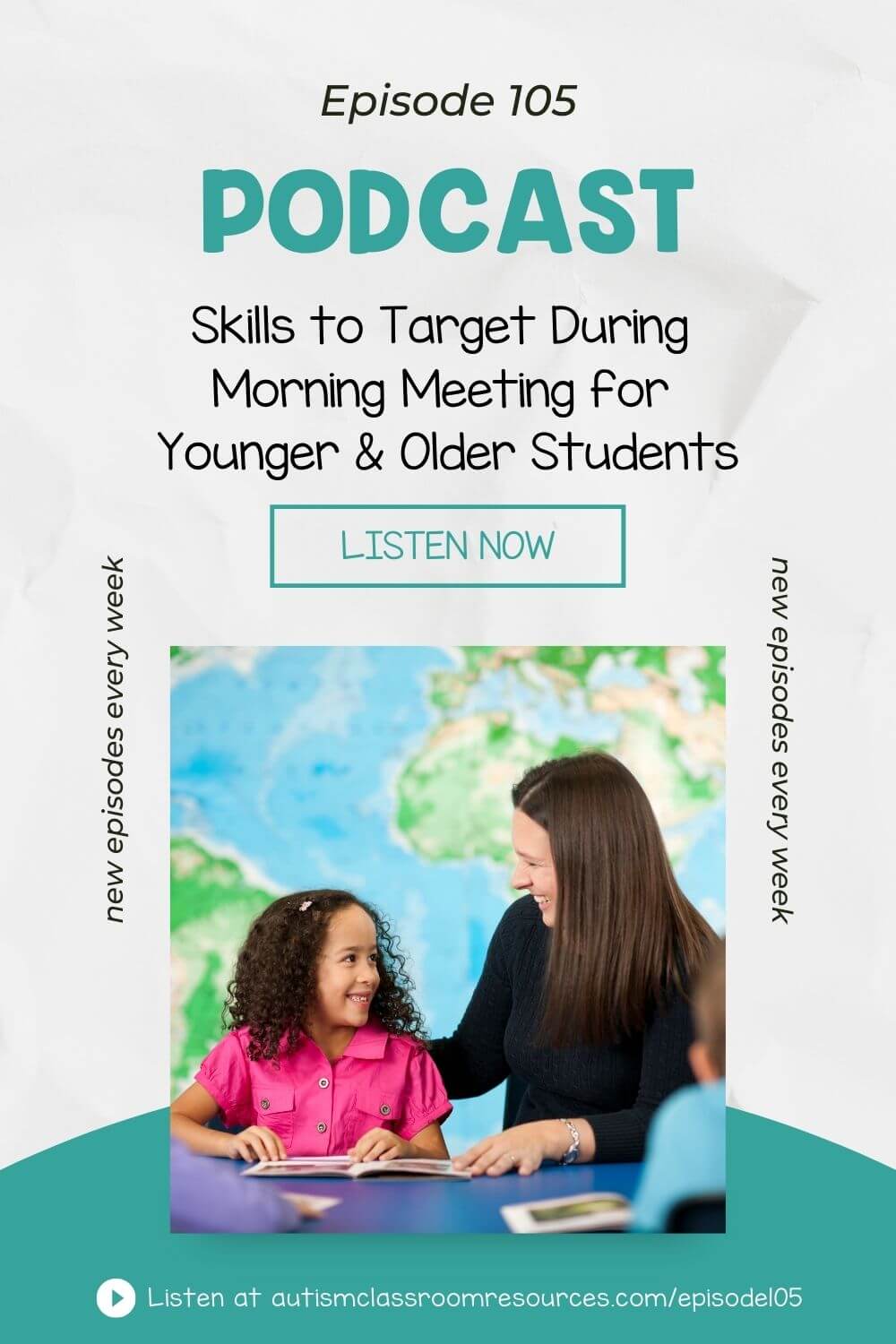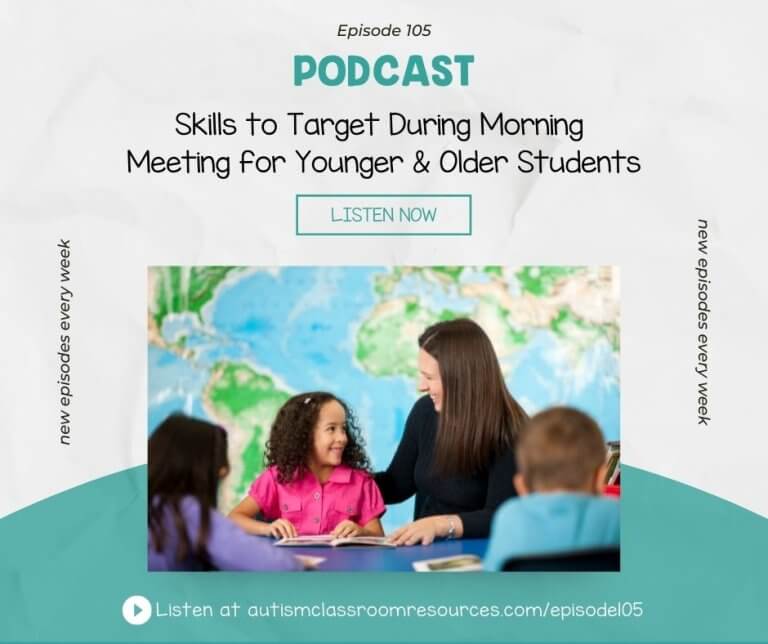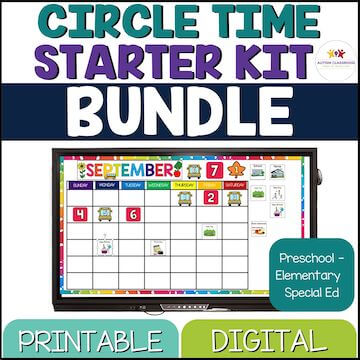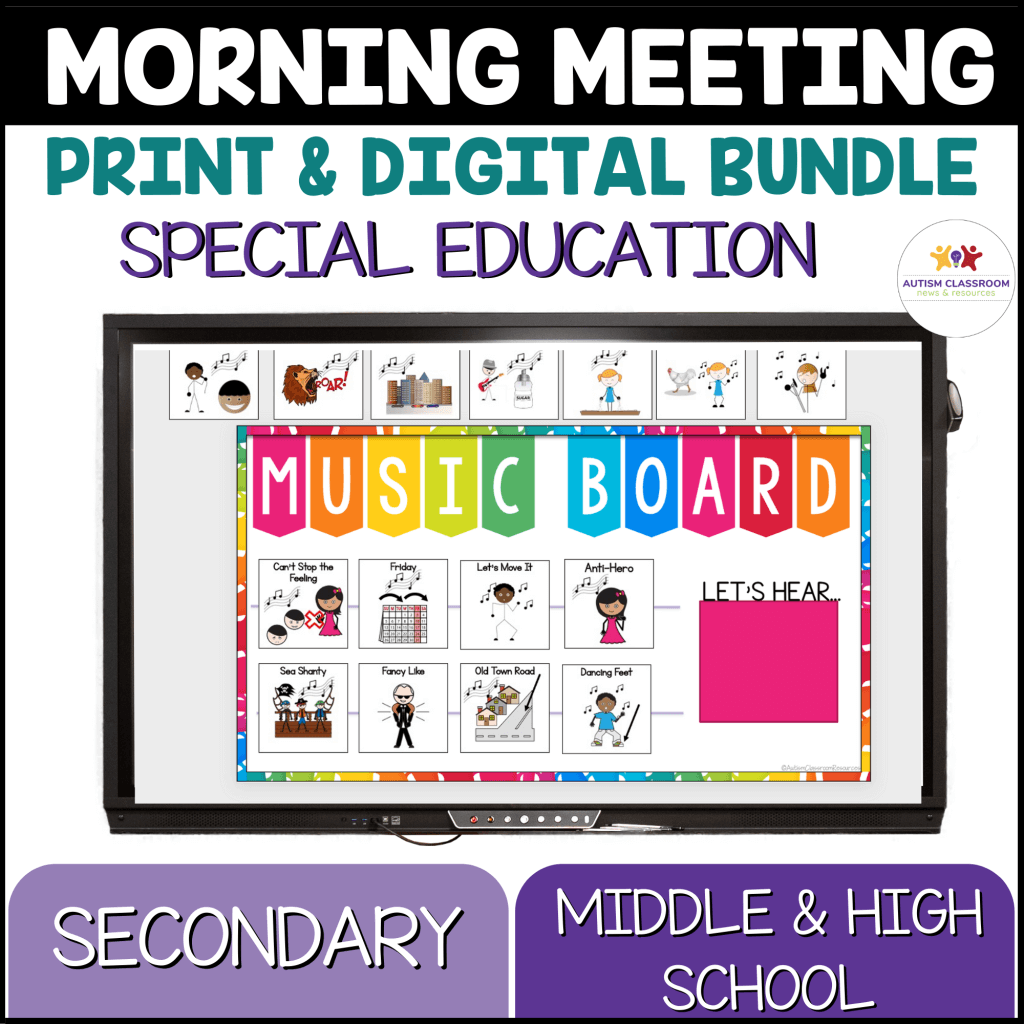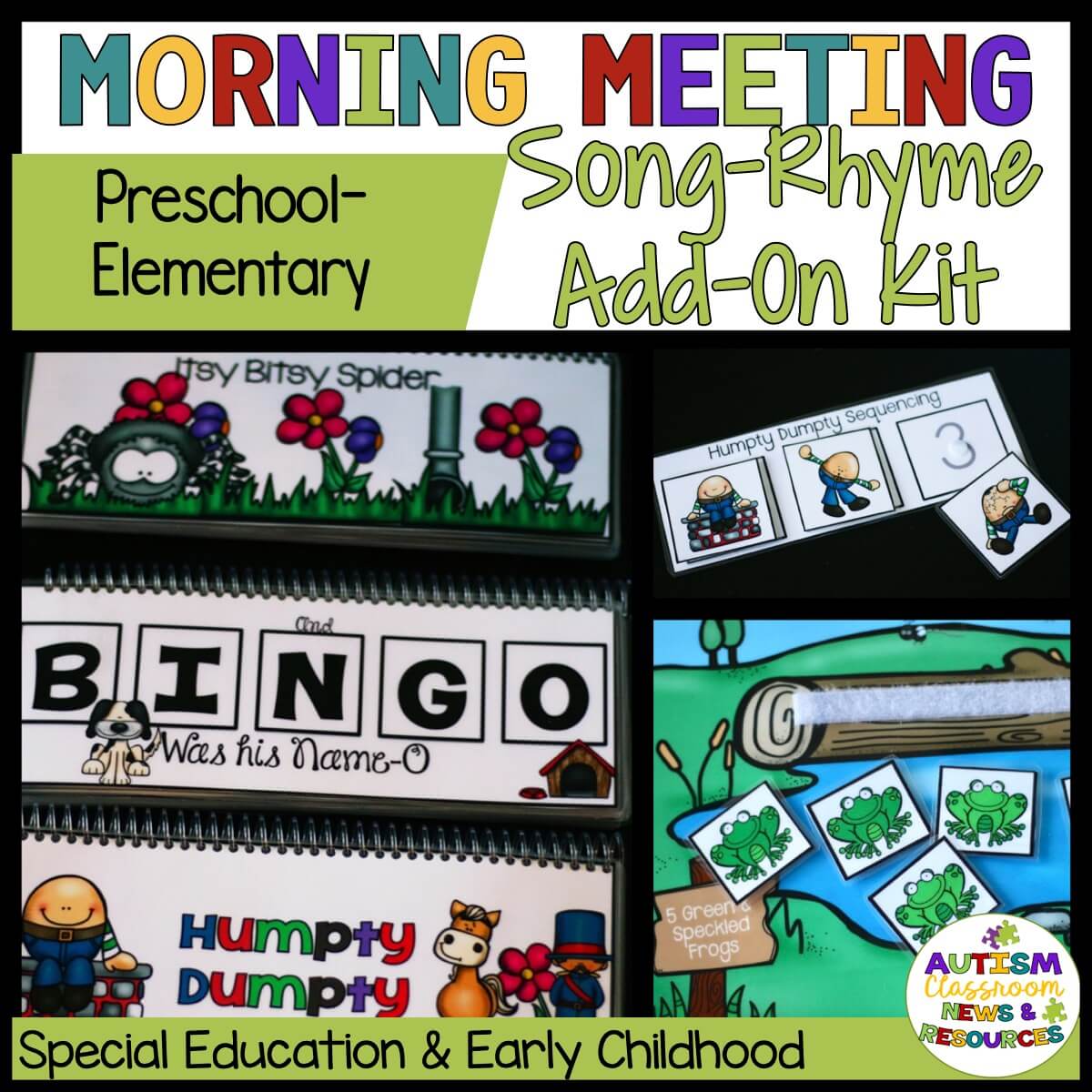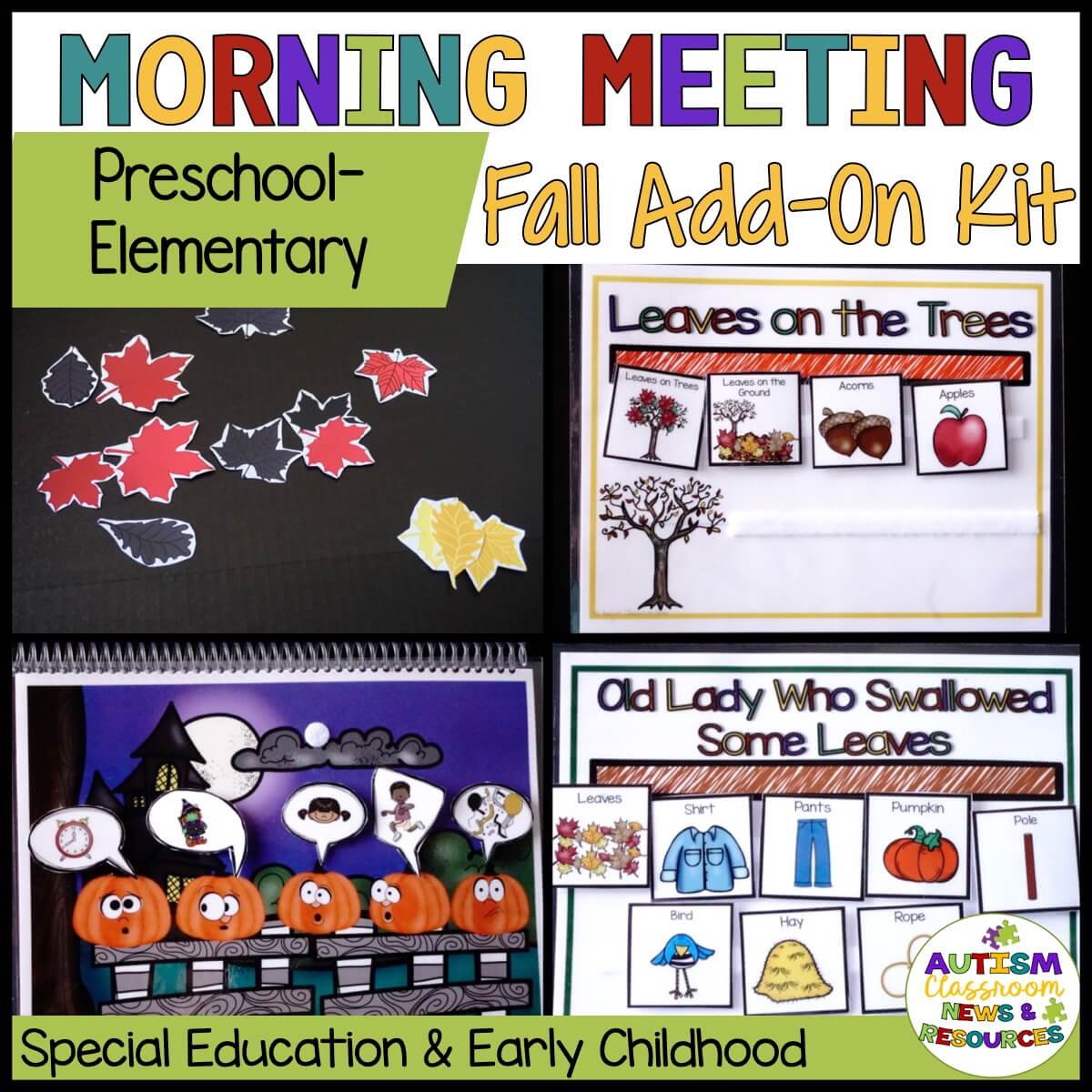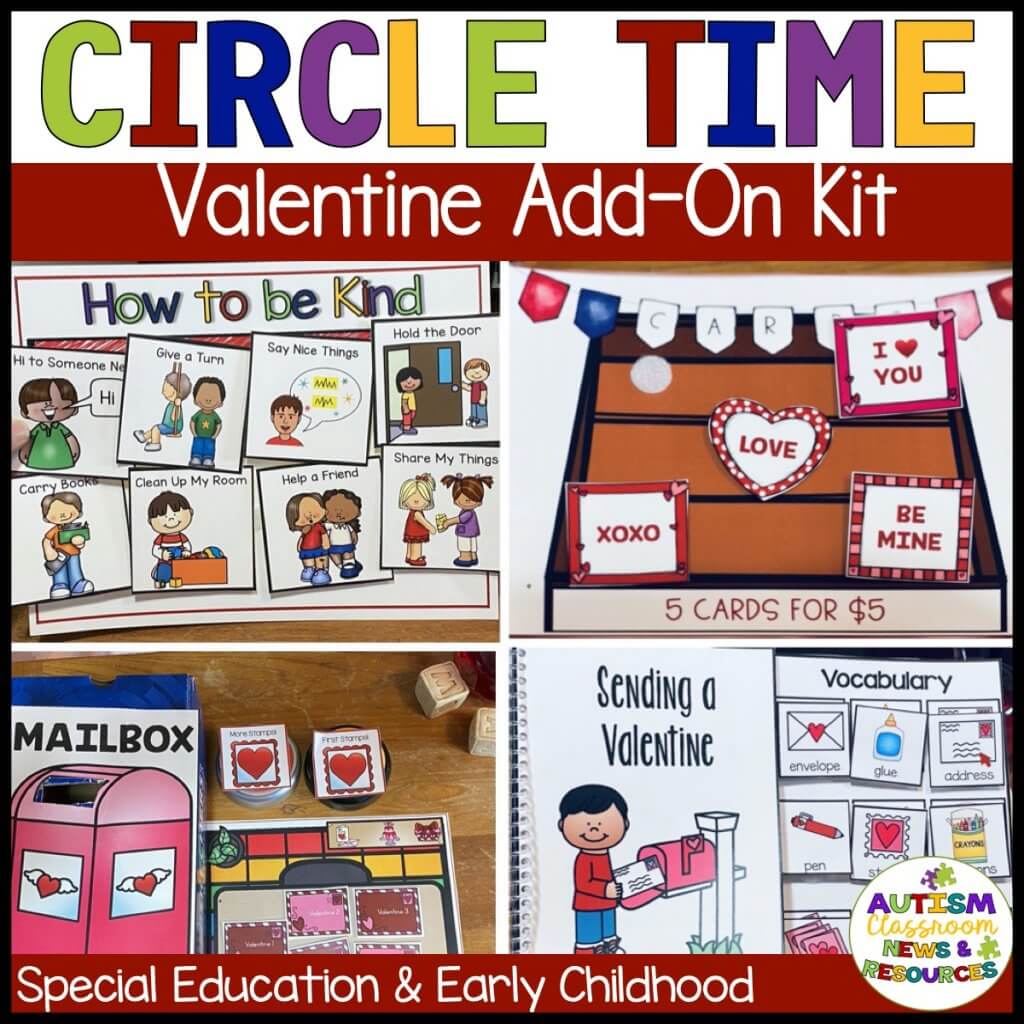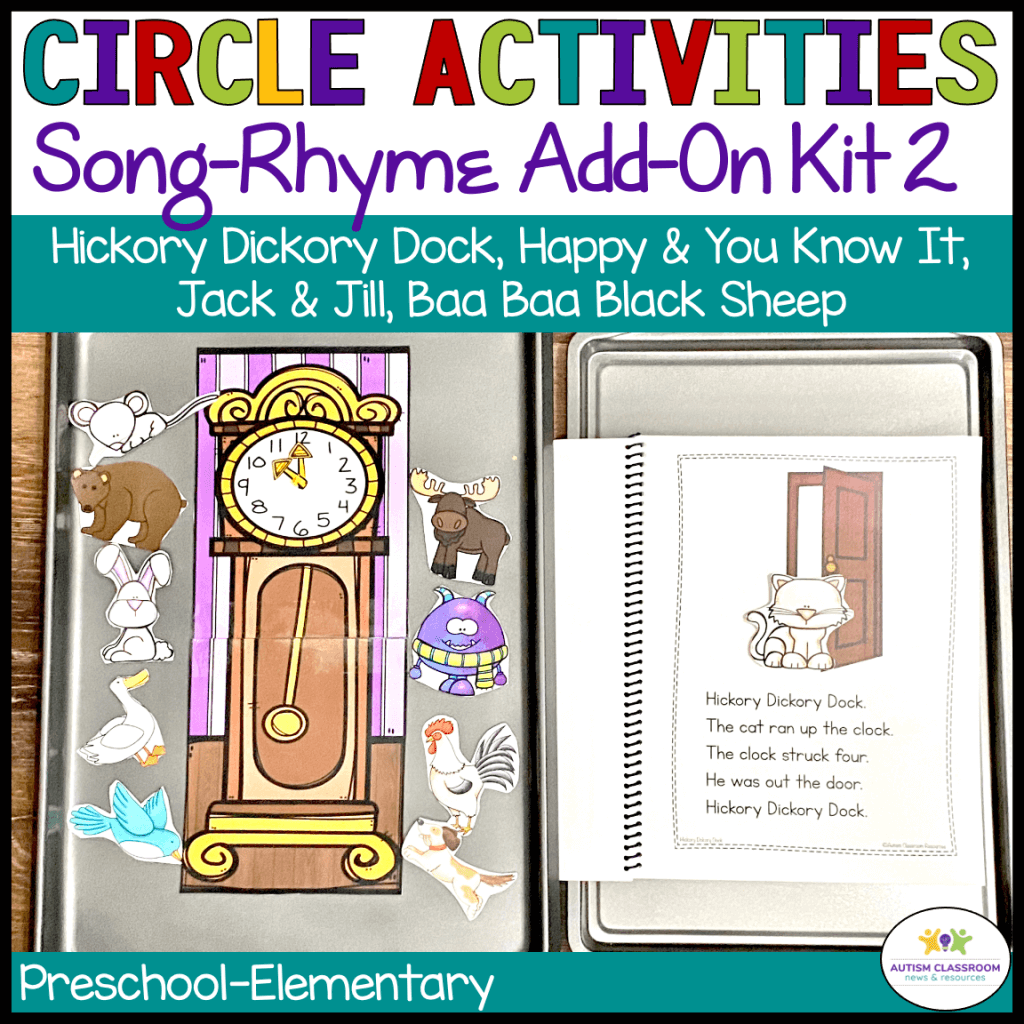Welcome to the Autism Classroom Resources Podcast, the podcast for special educators who are looking for personal and professional development.
Christine Reeve: I’m your host, Dr. Christine Reeve. For more than 20 years, I’ve worn lots of hats in special education but my real love is helping special educators like you. This podcast will give you tips and ways to implement research-based practices in a practical way in your classroom to make your job easier and more effective.
Welcome back to the Autism Classroom Resources Podcast. I am Christine Reeve and I’m your host. We are talking about circle time or morning meeting as we sometimes call it. Usually, which one we call it depends on the age of the students. For young students, we call it circle, for older students, we often refer to it as morning meeting, or sometimes as calendar time. Obviously, the age of the students impacts the skills that we’re going to teach, and I’ll be focusing on both of those today. In Episode 104, I talked about why group instruction is so important for our students in special education. It’s important, not just for our students with autism, but all of our students in special education who need to learn to work in a group environment, and learn in a group environment. Today, I’ll be covering the importance of targeting both curriculum skills and individual goals, and the types of skills that we can and should be effectively teaching during this time. Let’s get started.
Let’s start with the importance of targeting curriculum goals and individual goals. A number of years ago, before No Child Left Behind was passed, special educators had a tendency to think that the IEP was the child’s curriculum. In fact, I used to ask training audiences to raise their hand when I asked, “What is your curriculum?” and they would tell me, “The IEP.” The one thing I can say for the progress since those years is that I think we’re all pretty clear that our students have to have curriculum goals in addition to their individual educational goals. Traditionally, circle time is a good time to address curricular goals, because it often is in line with a theme of the room, and we can time it with a curriculum pacing guide. That’s true for our younger students. I think when we think about our older students, we lose track of that a little bit. Then added to that, it can be problematic if your room has a wide range of grades. But if your students are on alternate standards, typically, we can work it out to some degree. There are some areas where it becomes hard to have that pacing guide, because we do have so many different kinds of students and needs in our classroom.
When we think about the general goals of the activity for the group and for the individual, I generally think about five common areas that we touch on—behavioral goals like learning readiness goals, things like staying in their seat, attending to a task, socialization goals, gross motor activity, so we often build in some movement which I think is important, we think about it very naturally for our preschool and early elementary students, but we often forget about it for older students and I think it’s just as important but it’s going to look different; our language goals and our cognitive goals. We really have to be thinking about our group activities as our opportunities to generalize the skills that we’ve taught in our smaller, direct instruction time and this is our opportunity first, to generalize their knowledge to a larger group.
When I think about my sequence of teaching across scheduled activities during the day, I think about three different types of instruction: my instruction where my students acquire skills; my instruction where they practice those skills that have been taught; and my instruction where they are generalizing their skills. Typically, they are acquiring skills in activities that we might call teacher time for young students. We might call it direct instruction. We might call it instruction. We might call it reading, math, work time, curriculum time, IEP goal time. We call it all sorts of different kinds of things: social studies, science. Practice is often independent work time, paraprofessional center time, art, snack, exercise time; so times where we’re practicing the skill but we may or may not have mastered it yet but we’re doing it in a similar fashion. Then generalization time is where we are moving that skill using different materials often with different instructors. We’re looking at vocational activities: field trips, community-based instruction trips, morning meeting, going into the general education classroom, going in and doing a lab in the science activity, going into the lunchroom, going to recess. Those are our opportunities to generalize some of our skills. The practice and generalization definitely overlaps some.
That is one function that morning meeting or circle time really does serve for us. But for some of our skills, it also is a teaching time and explicit instruction time. It’s an explicit instruction time for sometimes teaching IEP goals that need to take place in group instruction and curriculum skills that maybe take place naturally in group instruction. When we think about IEP goals, we’re selecting specific skills that we’re going to target in group instruction and we’re generalizing skills we’ve taught in other settings. When we think about curriculum skills, we’re thinking about our state standards, our “access points” as we call them in Florida, our developmental curriculum like Brigance, or HELP, or a functional curriculum like the AFLS, or the FISH, or other ones like that. We’re talking about those skill targets. Let’s talk about those.
Those are things that I plan out in my teaching implementation plan. You can learn more about the teaching implementation plan in Episode 80 where I talked about it in much more detail, and I use that to plan out what skills I’m targeting in morning meeting. You can find that episode at autismclassroomresources.com/episode80. We might be looking at behavioral skills of attending compliance, sitting appropriately. We might be looking at social skills of awaiting, sharing, passing out material, participating in a group activity is a skill for many of our students; turn-taking, paying visual attention to a leader, just looking their way, checking in—not staring at them, making eye contact—just checking in and letting them know that they’re attending. We’re looking at receptive language skills like listening for their name, following a one-step direction, following directions, identifying objects, pictures, concepts. We’re looking at expressive language, answering, “Who’s here today?” labeling objects, pictures. They might be singing songs, telling something to a classmate, or giving a presentation for an older student, expressively identifying concepts and prepositions, or answering questions. There are very common kinds of language skills.
For cognitive skills we might be looking at basic concepts like matching, sequencing, categorizing. We might be looking at memory, being able to tell you about something that happened earlier. I use my group schedule to review what happened to work on sequencing and memory during that time. I look at problem solving. Can they solve a problem? Looking at motor activity, imitating motor movements, following motor directions, manipulating materials, a lot of those songs we use in those circle activities are getting at those skills.
Let’s look at how we would implement these skills for younger students and for older students, and I’m not going to go through all of them because obviously I’d be here all day. But for all ages, some common skills that might be addressed for these students are social skills; so students are working on greeting their peers when they come to school usually, by saying, “Good morning,” to their teachers and classmates, some students will wave, some will say their peers names, some will use augmentative communication depending on their skill level. We might target calendar skills, understanding how to use a calendar and understanding time might be skills that we target for both older and younger students at this time of day. But for your little ones in circle time, that typically involves singing, calendar songs like Dr. Jean, or naming the days of the week, or singing the days of the week song, often with a song or a video. It might be finding today’s day on the calendar and so on.
For older students, we can and should still work on calendar skills, but it might include navigating a day planner, finding an upcoming special event on the calendar, and counting the days until it happens. For some students, it might involve working on executive functioning skills like planning out long-term assignments, how many days until your paper is due and what steps are you taking to get to the done-end of that assignment? For students who are still working on understanding the calendar itself, they might still be working on identifying dates and days of the week but they might be noting who’s in school and who is home. Finding again, finding it in their day time or finding the calendar on the calendar itself, finding the day on the calendar but they wouldn’t be doing it with songs rather they might be taking attendance and recording it on the right day on the calendar.
A great calendar activity that a member in the Special Educator Academy did with her high school class was to have them use the internet to do a web search every day to find what happened in history on that day and record it in a journal—which I thought was just a really cool way for them to find that out and learn good web internet skills. Another socialization skill that we might address during this time would be turn taking and sharing and again, young students might get instruments or bean bags to participate in a song. They might have to pass materials between them or pass them back and forth. If the teacher has set it up, then maybe there aren’t enough instruments for all the students so two students have to share the maracas or the tambourines so they’re practicing sharing. For older students, it might be sharing something that they did the night before; so sharing that with the class or the students could have web quests that they’re assigned each day, and share their results. Those might be their sharing or their socialization targets. One could be responsible for a news article. One could be looking up the weather, another could be finding out a restaurant that they’re going to on a community outing and then each one presents their information in some form. Maybe they present it in a printed web sheet, maybe they present it in a verbal presentation.
For all ages throughout the activity, they may have to wait their turn to answer a question, they may have to raise their hand and wait to be called on while others might not be ready for this, so it just depends on your students. Communication and language skills, obviously, are big skills that can be targeted during circle time. Obvious goals include answering questions including yes/no questions, but you could also target language skills like describing pictures in the book, talking about the trip to school, “Who rode with them?” “Who drove them?” Or even talking about the schedule and what will happen later in the day using the group schedule. All of these activities can be done with all ages depending on how they’re presented to the group. More basic communication and language skills that some students may still need to work on might include responding to their name, looking at the teacher when their name is called, following simple directions, or identifying common pictures and books. These skills overlap with skills that we often refer to as learning readiness skills.
In the Special Educator Academy, we actually have a whole workshop and toolkit on learning readiness skills because so many students benefit from explicit instruction in this area. Learning skills such as responding to their name, matching simple pictures, making choices with pictures, staying in their seat, waiting their turn, following simple directions are skills to help students learn to learn. These are important skills that we often start teaching in small groups or one-to-one work with students. But it’s critical that they generalize them to group settings, and circle time is a good time to practice them. They aren’t just for younger students. If our older students haven’t learned them, they benefit from that instruction as well and we have the workshops set up for all ages. As you can see, I can go on and on and on with examples of running group activities for all ages. If you’re interested to know what circle time might look like focusing on these skills, definitely come join us in the Special Educator Academy, where we have a whole workshop on effective group instruction, effective group activities, and we’ve got several group quick wins that are 15 minutes or less, lightning trainings that are five minutes or less on how we can adapt them for students who don’t have a lot of learning readiness skills.
You can come try seven days free in a trial on the Special Educator Academy to get your new year off to an amazing start. You can find that at specialeducatoracademy.com. If you’re looking for engaging circle materials to get your students working on all these types of skills, check out the post for this episode at autismclassroomresources.com/episode105 where you’ll find links to my Preschool Primary Morning Meeting Starter Kit and my add-on kits, including the newest one that has an amazing fun interactive Hickory Dickory Dock Clock (try saying that three times fast). I hope you’ll come back next week for another episode where we’re going to be focusing on effective group instruction and until then, I’ll just be sitting here singing, Hickory Dickory Dock or saying, “Hickory dickory dock clock.”
